CAA News Today
The Art Bulletin Reviews Online Collection Catalogs
posted by CAA — July 13, 2017
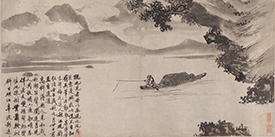
Shen Zhou, Solitary Angler on an Autumn River, 1492, handscroll, ink on paper, 13½ x 411½ in. (34.4 x 1045 cm), frontispiece: 11¾ x 33 in. (30 cm x 83.8 cm). Seattle Art Museum, Gift of Karen Wang, 97.80 (artwork in the public domain; photograph provided by the Seattle Art Museum)
In its June 2017 issue, The Art Bulletin is publishing reviews of six online collection catalogs issued by the National Gallery of Art, Washington DC; the Seattle Art Museum; the Arthur M. Sackler and Freer Gallery of Art, Washington DC; the Art Institute of Chicago; the Tate, United Kingdom; and the Walker Art Center, Minneapolis. This is the first time the quarterly journal has devoted its reviews section to digital scholarship.
Stephen H. Whiteman’s review of the Seattle Art Museum’s Chinese Painting & Calligraphy catalog is available now in an enhanced digital version, published on the Scalar platform and developed in collaboration with Nancy Um and Lauren Cesiro. The open-access project is at http://scalar.usc.edu/works/samosci/index.
News from the Art and Academic Worlds
posted by Christopher Howard — July 12, 2017
Each week CAA News summarizes eight articles, published around the web, that CAA members may find interesting and useful in their professional and creative lives.
Lessons from the Scaffold Controversy: “Museums Are Inherently Colonial Institutions”
It’s been just over a month since Minneapolis was hit with the Scaffold controversy. We asked several American curators to consider the controversy’s lessons for the larger museum world. Their responses set a new tone for how cultural institutions can work with local indigenous communities. (Read more from the Minneapolis Star Tribune.)
Falling in Love with a Felix Gonzalez-Torres Go-Go Dancer
It was the squeaking of the shoes that caught my attention. I knew exactly what was going on, and that the pale blue platform which I had seen empty a minute earlier was now occupied. I quietly rushed through the gallery to the small room where I saw him. Upon walking in, I froze and stared. (Read more from Hyperallergic.)
Thomas Campbell on Why He Stepped Down from the Met
I’ve moved the museum forward in many respects. We’ve modernized and come into the twenty-first century. We have an extraordinarily strong program. We’ve grown our audience by 40 percent. We’ve digitized. And we’ve done a lot of planning for the future. (Read more from the Art Newspaper.)
Most of a Mexican Museum Collection Fails Authentication
Almost all artifacts described as the oldest in the permanent collection of the Mexican Museum are either forgeries or cannot be authenticated to display in a national museum. That’s the finding of a report commissioned by the museum board and submitted in late June by Eduardo Pérez de Heredia Puente, an associate of the National Institute of Anthropology and History in Mexico City. (Read more from the San Francisco Gate.)
The Women Who Built the New York Art World
Over the course of ten years, between 1929 and 1939, four of New York City’s most iconic museums emerged: the Museum of Modern Art, the Whitney, the Frick Collection, and the Solomon R. Guggenheim Museum. These institutions are now world famous. But their founders—predominantly women—are relatively unknown. (Read more from Artsy.)
How to Chair a University Department and Not Be Terrible at It
This summer, I am completing a five-year stint as chair of my department. I know a lot more about chairing than I did when I took on the position, so I thought this might be a good time to share some lessons for those now taking on similar positions in their institutions or considering doing so in the future. (Read more from Pacific Standard.)
The Rise of the Thought Leader
The rich have empowered a new kind of thinker—the “thought leader”—at the expense of the much-fretted-over “public intellectual.” Whereas public intellectuals like Noam Chomsky or Martha Nussbaum are skeptical and analytical, thought leaders like Thomas Friedman and Sheryl Sandberg “develop their own singular lens to explain the world, and then proselytize that worldview to anyone within earshot.” (Read more from the New Republic.)
How to Build Your Own Career Fair
Career fairs pose special challenges for doctoral students and postdocs. Some people I advise describe feeling discouraged that the organizations they encounter at local career fairs are misaligned with their specific career interests. One reason is that the diversity of PhD programs in many institutions makes it impractical to bring together employers who appeal to a large portion of attendees. (Read more from Inside Higher Ed.)
Fair Use Events in France: A Recap
posted by michaelh — July 11, 2017
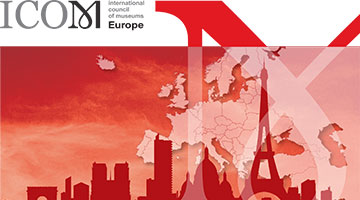 On June 4 and 6, CAA, represented by Hunter O’Hanian, participated in three events in France about CAA’s Code of Best Practices in Fair Use for the Visual Arts. The first took place on June 4 in Fontainebleau, when O’Hanian spoke at a session on “Fair Use and Open Content,” at the seventh annual Festival of Art History, held during the annual Fontainebleau Festival. Organized by Martine Denoyelle of France’s Institut National d’Histoire de l’Art (INHA), other speakers included Hana Leaper from the Paul Mellon Center for Studies in British Art (UK) and Mikka Gee Conway from the J. Paul Getty Trust. Approximately seventy-five people attended the session, which concluded with a lively discussion about copyright issues in France, the UK, and USA. To share the content of the Code of Best Practices as widely as possible, CAA produced a version in French translation that was available throughout the three day festival.
On June 4 and 6, CAA, represented by Hunter O’Hanian, participated in three events in France about CAA’s Code of Best Practices in Fair Use for the Visual Arts. The first took place on June 4 in Fontainebleau, when O’Hanian spoke at a session on “Fair Use and Open Content,” at the seventh annual Festival of Art History, held during the annual Fontainebleau Festival. Organized by Martine Denoyelle of France’s Institut National d’Histoire de l’Art (INHA), other speakers included Hana Leaper from the Paul Mellon Center for Studies in British Art (UK) and Mikka Gee Conway from the J. Paul Getty Trust. Approximately seventy-five people attended the session, which concluded with a lively discussion about copyright issues in France, the UK, and USA. To share the content of the Code of Best Practices as widely as possible, CAA produced a version in French translation that was available throughout the three day festival.
Read the Code of Best Practices in French
On June 6, O’Hanian was part of a panel about fair use during the annual conference of ICOM Europe, held at the Musée des Arts et Metiers in Paris. Titled “Copyright Flexibilities in the US and EU: How Fair Use and Other Flexibilities are Helping Museums to Fulfill their Mission,” the session also included Peter Jaszi, professor of law at the Washington College of Law, American University, and a principal lead investigator for CAA’s fair use initiative. The event was introduced Luis Raposo, president of ICOM-Europe, and included Ronan Deazley, Queens University, Belfast, Northern Ireland; Paul Klimpel, iRights Lab Culture, and ICOM Germany member; Claire La Henaff, Musée National Picasso (Paris), and ICOM France member; and Charlotte Waelde, Centre for Dance Research, Coventry University. Approximately one hundred museum professionals from countries throughout Europe attended the event.
Earlier the same day, CAA convened a small planning meeting to explore next steps in sharing the Code of Best Practices with decision makers in the EU interested in increasing copyright flexibilities. The Terra Foundation generously made their Paris offices available for the meeting, which included, in addition to O’Hanian and Jaszi, Francesca Rose from the Terra Foundation; Anne Goodyear, codirector of the Bowdoin College Museum of Art and chair of CAA’s Committee on Intellectual Property; Martine Denoyelle, Chief Curator of Heritage, Institut National d’Histoire de l’Art; Ronan Deazley, School of Law, Queens University, Belfast, N. Ireland; and Stef van Gompel, Faculty of Law, University of Amsterdam. The discussion focused on ways in which European countries were increasing access to information and images, including open access and fair dealing (in the UK), and the usefulness of gathering data about current EU practices in the use of copyrighted materials. The group plans to reconvene during the CAA annual conference in Los Angeles in 2018.
CAA’s participation in these events was underwritten by a generous grant from the Samuel H. Kress Foundation.
New in caa.reviews
posted by CAA — July 07, 2017
Cindy Lisica visits We Chat: A Dialogue in Contemporary Chinese Art at the Asia Society Texas Center. The exhibition features artists “who were of single-digit age during the 1989 Tiananmen Square protest-turned-massacre” and are “self-reflective and uninhibited by conventional social constructions of the past.” It is “a layered, nuanced, and exhilarating presentation of contemporary currents in Chinese art.” Read the full review at caa.reviews.
Alpesh Kantilal Patel reviews Nari Ward: Sun Splashed and Firelei Báez: Bloodlines, both at the Pérez Art Museum Miami. The “first mid-career retrospective of the Jamaican-born” Ward and his “diverse oeuvre” “overlapped with “a smaller solo exhibition of primarily paintings and drawings by the Dominican Republic-born Báez, a former student of Wards,” presenting “a carefully constructed curatorial conceit.” Read the full review at caa.reviews.
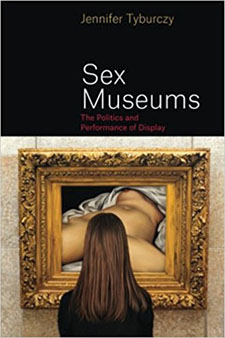 Sampada Aranke reads Sex Museums: The Politics and Performance of Display by Jennifer Tyburczy. In this “dynamic and compelling study,” the author “provocatively weaves together a mode of research and writing that thickens the role of sex in the museum . . . cracking[ing] open an unwieldy composition of narratives, critical approaches, and sensual objects to rethinking the pleasure and politics of display.” Read the full review at caa.reviews.
Sampada Aranke reads Sex Museums: The Politics and Performance of Display by Jennifer Tyburczy. In this “dynamic and compelling study,” the author “provocatively weaves together a mode of research and writing that thickens the role of sex in the museum . . . cracking[ing] open an unwieldy composition of narratives, critical approaches, and sensual objects to rethinking the pleasure and politics of display.” Read the full review at caa.reviews.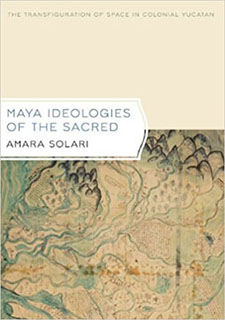 Ana Pulido-Rull discusses Amara Solari’s Maya Ideologies of the Sacred: The Transfiguration of Space in Colonial Yucatan. The author “examines the city of Itzmal” to “illustrate how this project was heavily influenced, even challenged, by deep-rooted Maya traditions and conceptions of space,” providing “a nuanced understanding” of these ideas “and their role in shaping early colonial indigenous identity.” Read the full review at caa.reviews.
Ana Pulido-Rull discusses Amara Solari’s Maya Ideologies of the Sacred: The Transfiguration of Space in Colonial Yucatan. The author “examines the city of Itzmal” to “illustrate how this project was heavily influenced, even challenged, by deep-rooted Maya traditions and conceptions of space,” providing “a nuanced understanding” of these ideas “and their role in shaping early colonial indigenous identity.” Read the full review at caa.reviews.Artists’ Legacies Unpacked in Art Journal
posted by CAA — July 05, 2017
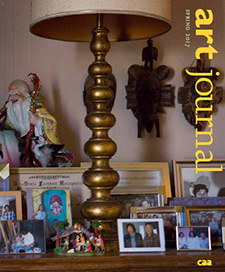 “What to do with all the stuff?” This is one of many questions posed—and provisionally answered—in the most recent issue of Art Journal, in an extensive multiauthor forum that delves into the complex matter of artists’ estates. “The Politics of Legacy,” guest-edited for the journal by Rachel Middleman and Anne Monahan, comprises contributions by no fewer than twenty-one artists and scholars. The texts include interviews (with, for example, Flavin and Rainer Judd, Mira Friedlaender, and Jane Kallir of Grandma Moses Properties, Inc.) and position papers (by Caroline A. Jones, Michael Corris, and Nancy J. Troy, among others). Central to the forum are three commissioned artists’ projects by Danh Vo (on the estate of Martin Wong), Mimi Gross (the estate of her father Chaim Gross, as well as her own legacy as an artist), and Jill Magid (the contested estate of the Mexican architect Luis Barragán).
“What to do with all the stuff?” This is one of many questions posed—and provisionally answered—in the most recent issue of Art Journal, in an extensive multiauthor forum that delves into the complex matter of artists’ estates. “The Politics of Legacy,” guest-edited for the journal by Rachel Middleman and Anne Monahan, comprises contributions by no fewer than twenty-one artists and scholars. The texts include interviews (with, for example, Flavin and Rainer Judd, Mira Friedlaender, and Jane Kallir of Grandma Moses Properties, Inc.) and position papers (by Caroline A. Jones, Michael Corris, and Nancy J. Troy, among others). Central to the forum are three commissioned artists’ projects by Danh Vo (on the estate of Martin Wong), Mimi Gross (the estate of her father Chaim Gross, as well as her own legacy as an artist), and Jill Magid (the contested estate of the Mexican architect Luis Barragán).
Elsewhere in the issue, editor-in-chief Rebecca Brown has selected three essays that deal with upheaval. Nazar Kozak details the interventions by Ukrainian artists during the 2013–14 uprising in Kyiv that brought down the nation’s government—artworks that at times literally became part of the armed barricade in the city’s central square. Sherry Buckberrough conjures the early twentieth-century context in which the Robert Delaunay created singular works with themes of androgyny, gender, and political violence. Sophie Landres explores sexual, corporeal, and musical interventions of the groundbreaking performances of Charlotte Moorman in late-1960s, as the new ideas of feminism reached the larger culture.
The issue marks the debut of reviews editor Kirsten Swenson, whose commissions explore books on Carolee Schneemann, on art in postwar South America, and on the trajectory of the choreographer Simone Forti. “The Prehistory of Exhibition History,” a critical bibliography by grupa o.k. (Julian Myers and Joanna Szupinska), completes the section.
CAA sends print copies of Art Journal to all institutional members and to those individuals who choose to receive the journal as a benefit of membership. The digital version at Taylor & Francis Online is currently available to all CAA individual members regardless of their print subscription choice.
News from the Art and Academic Worlds
posted by Christopher Howard — July 05, 2017
Each week CAA News summarizes eight articles, published around the web, that CAA members may find interesting and useful in their professional and creative lives.
Do Free Speech and Inclusivity Clash?
Greg Lukianoff has spent much of his career making life miserable for college and university lawyers. So some members of the National Association of College and University Attorneys might have been surprised to hear the head of the Foundation for Individual Rights in Education suggest that students—not campus officials—are increasingly the people he worries most about in campus free speech debates. (Read more from Inside Higher Ed.)
Decoding the Trump Regime
Political art, however well intentioned, isn’t going to stop Congress and the President from swapping billions in Medicaid for tax cuts for the rich, endangering millions of lives. When the artist Sharon Louden asked on Twitter, “Can things get worse?,” expressing bewilderment and frustration with the latest Republican assault on the Affordable Care Act, I could only reply “Most certainly.” (Read more from Hyperallergic.)
Getting In and Out
Two weeks after watching Get Out, I stood with my children in front of Open Casket, Dana Schutz’s painting of Emmett Till, the black teenager who, in 1955, was beaten and lynched after being accused of flirting with a white woman. My children did not know what they were looking at and were too young for me to explain. (Read more from Harper’s.)
David Goldblatt on Artistic Freedom, Censorship, and Moving His Archive Out of South Africa
Until recently, the South African photographer David Goldblatt had arranged for his archive to go to the University of Cape Town upon his death. That changed in February 2017, when he announced that he would be moving both the collection and, in time, his entire archive to Yale University. (Read more from ARTnews.)
Contradictions in How We Think about Teaching
Students think ability matters more than effort, and teachers think teaching is a gift that is given more than a skill that can and should be developed. Students want easy answers, and teachers want techniques that work right the first time. Both share the fear of failure. Is this a comparison from which we might learn something? (Read more from Faculty Focus.)
Can We Increase the Impact and Reach of Scholarly Research?
Occasionally, the Learned Publishing editorial team enjoys browsing our archives and reflecting on the changing anxieties, strategies, and values within our community over the years. One hot topic among authors in the last decade is the increasing pressure to reach beyond the traditional confines of journals and faculty tenure cycles. (Read more from the Scholarly Kitchen.)
Do the Prices at Auction Muddy Our Interpretation of Art?
Art and money have always been uncomfortable bedfellows. Works can’t get made in a vacuum and the machinations of the market help to keep them relevant. The trading records of works of art—who bought them, who sold them, for how much and why—arguably contribute to a more rounded art-historical picture. (Read more from Apollo.)
US Arts Nonprofits Generated $166.3 Billion in Spending in 2015
The average American culture vulture spends an additional $31.47 whenever he or she attends an arts event: almost $17 on food, about $4.50 on souvenirs and gifts, over $3 on local transportation. This is the microlevel of $166.3 billion in economic activity that the nonprofit arts sector contributed to the US economy in 2015, according to an Americans for the Arts study. (Read more from Hyperallergic.)
Apply for a 2017 Professional-Development Fellowship
posted by CAA — July 05, 2017
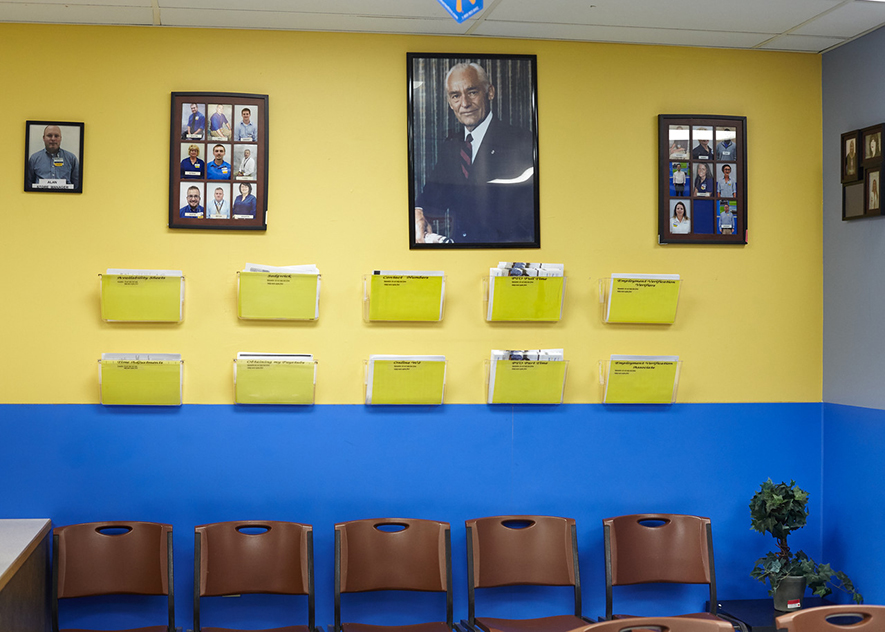
Photography by Daniel Seth Kraus, 2016 Professional-Development Fellowship Awardee
CAA Announces the opening of its Professional-Development Fellowship for 2017. The program supports promising artists, designers, craftspeople, historians, curators, and critics who are enrolled in MFA, PhD, and other terminal-degree programs nationwide.
Fellows are honored with $10,000 grants to support their work, whether it be for job-search expenses or purchasing materials for the studio.
One award will be presented to a practitioner—an artist, designer, and/or craftsperson—and one award will be presented to an art, architecture, and/or design historian, curator, or critic. Fellows also receive a free one-year CAA membership and complimentary registration to the 2018 Annual Conference in Los Angeles, February 21-24. Honorable mentions, given at the discretion of the jury, also earn a free one-year CAA membership and complimentary conference registration.
CAA initiated its fellowship program in 1993 to help student artists and art historians bridge the gap between their graduate studies and professional careers.
CWA Picks for July 2017
posted by CAA — July 03, 2017
Each month, CAA’s Committee on Women in the Arts selects the best in feminist art and scholarship. The following exhibitions and events should not be missed.
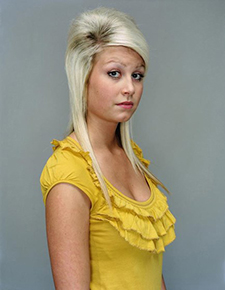
Rineke Dijkstra, Amy, The Krazy House, Liverpool, December 23, 2008, 2008 (collection of the artist)
Rineke Dijkstra: An Ode
Stedelijk Museum
Museumplein 10, 1071 DJ, Amsterdam, Netherlands
May 20–August 6, 2017
In celebration of Rineke Dijkstra’s recent honor of receiving the prestigious Hasselblad Foundation’s International Award in Photography for 2017, the Stedelijk Museum has mounted a small but excellent curated exhibit of this lauded Dutch artist. Twenty-one photographs and four videos are included in An Ode, which showcases Dijkstra’s masterful technique and remarkable sensitivity to her youthful subjects and the delicate process of their coming of age. As the artist noted, “With young people everything is much more on the surface—all the emotions. When you get older you know how to hide things.” Under her keen eye and deft hand, portraits of adolescence become something intimate and lovely and compelling.
The exhibit, which draws from Stedelijk’s own extensive collection of her work, as well as loans from the artist, is meant to be a celebration as well as an amuse-bouche for later offerings in the season. Later this year, the museum will present Dijkstra’s work Almerisa (1994–2008), a series of portraits that follows the life of a young Bosnian refugee girl from her arrival in the Netherlands to her adulthood.
Acolytes of this contemporary photographer can also see an extensive retrospective of her work at the Louisiana Museum (Copenhagen, Denmark) this fall, and then at the Museum de Pont (Tilberg, the Netherlands) in early 2018.
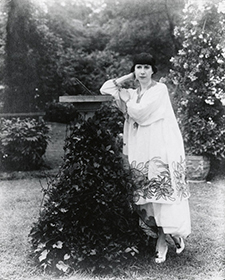
Florine Stettheimer, photograph by Peter A. Juley & Son, ca. 1917–20 (image provided by Peter A. Juley & Son Collection, Photograph Archives, Smithsonian American Art Museum, Washington, DC)
Fahrelnissa Zeid
Tate Modern
Bankside, London SE1 9TG
June 13–October 8, 2017
In the first major retrospective of her work, the Turkish artist Fahrelnissa Zeid, a pioneer in the European avant-garde of the 1940s and 1950s, dazzles. Trained in Paris and Istanbul (one of the first women to go to art school there), she produced work that synthesized historical and contemporary Middle Eastern and European artistic practices. Zeid, a princess and Muslim, cut an unusual figure in the midcentury art world. Her oeuvre is astonishingly diverse, ranging from large abstract paintings to smaller figurative pieces, and from traditional materials to new media such as chicken bones, which she painted, cast into polyester resin, and fashioned into stained-glass-like objects.
Zeid’s vibrant and energetic works were widely exhibited and enjoyed critical success, and yet her work fell into obscurity in subsequent decades. Frances Morris, the director of Tate Modern, told the Guardian of the rediscovery of her work on a 2008 trip to Istanbul, saying: “We were stunned to encounter for the first time in our lives, these huge, ornate, decorative, multifaceted, brilliantly coloured, swirling abstract paintings. We’d never seen her work in our lives and we’d never seen anything like it. It was a really exciting moment.” The retrospective of Fahrelnissa Zeid is part of the museum’s stated commitment to showcase artists of the modern era who have been overlooked and underrepresented in the art world.
Florine Stettheimer: Painting Poetry
Jewish Museum
1109 5th Ave, New York, New York
May 5–September 24, 2017
Writing for Art in America in 1980, the art historian Linda Nochlin made this assessment of Florine Stettheimer’s work: “Florine Stettheimer, the artist, existed in this world, it is true, but still somewhat apart from it––as her painting exists apart from the major currents of her time.” Stettheimer, who was born in Rochester and studied at the Art Student League of New York, is known for her affected paintings (sometimes with accompanying sculptural, scalloped frames), that reflect the comings and goings of her family—most notably her two other sisters—and a host of artists, writers, and other members of New York’s intelligentsia. Marcel Duchamp was a friend, and she was a frequent theater-goer, even designing the sets and costumes for the 1934 production of Gertrude Stein’s opera intended for an all-black cast, Four Saints in Three Acts. Oh, and she wrote poetry, which is a constant presence throughout this exhibition at the Jewish Museum. Reading her poetry, like looking at some of her works, can sometimes feel like an exhausting account of the pleasures of being one of the “haves”: “My attitude is one of Love / is all adoration / for all the fringes / all the color / all tinsel creation / I like slippers gold / I like oysters cold / and my garden of mixed flowers / and the sky full of towers / and traffic in the streets / and Maillard’s sweets / and Bendel’s clothes / and Nat Lewis hose / and Tappé’s window arrays / and crystal fixtures / and my pictures / and Walt Disney cartoons / and colored balloons.” Still, there’s a soulful seeing behind her spindly figures, especially her self-portraits and portraits of her closest family members. Taken together these paintings are a masterclass in forging an artistic path of one’s own.
Star Montana: I Dream of Los Angeles
Beta Main
114 W. 4th St., Los Angeles, CA
May 7–July 23, 2017
Star Montana’s photographs line the walls of the Main Museum’s Beta space—each a portrait of someone who the artist encountered on the streets or met through an open call. Some are friends. Most are strangers. Yet all are given a kind of monumental attention in Montana’s practice. Alongside each photograph is a small piece of writing, reflecting on the circumstances in which the picture was taken, the first time Montana met her subject, or a meditation on the vagaries of dailyness living in East and South Los Angeles. The viewer scans between words and picture, looking for the same vulnerabilities and strengths in the images that appear in the text. The colors of these photographs are lush, and the relationship between sitter and photographer is palpable, close. It is an ode to this great and complex city, as evinced through the people who live in it.
Gray Matters
Wexner Center for the Arts
Ohio State University, 1871 North High Street, Columbus, OH
May 20–July 30, 2017
Now on view at the Wexner Center for the Arts, Gray Matters brings together thirty-seven contemporary women artists exploring the practice of grisaille—the French term for working in shades of gray. “Ranging from emerging to well-established, these artists challenge an all-too-simplistic notion of colorless ‘neutrality’ as they reveal the variegated spectrum of black, white, gray, and everything in between.”
The more than fifty works include a variety of mediums and media, from sculpture to portraiture, video to graphite drawings. Among the works is Mickalene Thomas’s Hair Portrait #20 (2014). Known for her colorful canvasses, Thomas tones down her palette in Hair Portrait #20 “without relinquishing her celebratory use of rhinestones.” Also on view in the exhibition is Bethany Collin’s A Pattern or Practice (2015). In this piece the viewer is confronted with a wall installation of ninety-one blind-embossed portions of the US Department of Justice report on the Ferguson police department. “The show goes incredibly quiet with an idea that is incredibly loud,” Michael Goodson, senior curator of exhibitions, described arriving at the neatly spaced white sheets, with the words of the report pushing up the fibers of the paper.
Other artists in the exhibition include: Tauba Auerbach, Carol Bove, Gisele Camargo, Vija Celmins, Bethany Collins, Marsha Cottrell, Tacita Dean, Tara Donovan, Marlene Dumas, Michelle Grabner, Josephine Halvorson, Mona Hatoum, Roni Horn, Cristina Iglesias, Jennie C. Jones, Toba Khedoori, Laura Lisbon, Suzanne McClelland, Julie Mehretu, Katie Paterson, Joyce Pensato, Amalia Pica, Mary Reid Kelley, Michal Rovner, Nancy Rubins, Arlene Shechet, Erin Shirreff, Amy Sillman, Xaviera Simmons, Diane Simpson, Lorna Simpson, Avery Singer, Michelle Stuart, Mickalene Thomas, Kara Walker, Rachel Whiteread, and Carmen Winant.
A video of the exhibit, behind the scenes with artists’ interviews, can be found on YouTube here: https://www.youtube.com/watch?v=KIcdKkJV3Mg.
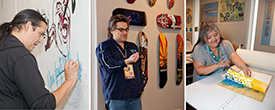
Melanie Yazzie, Gregg Deal, and Walt Pourier
Melanie Yazzie, Gregg Deal, Walt Pourier: Action X Community X Togetherness
Denver Art Museum
100 W 14th Avenue Pkwy, Denver, CO
May 6–September 7, 2017
Alumni of the Native Arts Artists-in-Residence program at the Denver Art Museum return for a summer of collaboration and creation. Melanie Yazzie, Gregg Deal, and Walt Pourier are cocreating through a project titled Action X Community X Togehterness X.
The Native Arts Artists-in-Residence program kicked off in 2012 with Yazzie and has gone on to host many established and up-and-coming artists working across media. Yazzie, a sculptor, painter, printmaker, and installation artist, often collaborates with indigenous artists, including those from groups in New Zealand, Siberia, Australia, and Canada, among others. Her work is informed and shaped by personal experiences and tries to tell many stories about things both real and imagined. It follows the Diné dictum “walk in beauty” literally, creating beauty and harmony.
“My artwork is culturally based in my heritage of being a Diné (Navajo) person. The artworks stem from the thought and belief that what we create must have beauty and harmony from within ourselves, from above, below, in front, behind and from our core. We are taught to seek out beauty and create it with our thoughts and prayers. I feel that when I am making my art, be it a print, a painting or a sculpture, I begin by centering myself and thinking it all out in a ‘good way,’ which is how I was taught from an early age. My work speaks about travel and transformation.”
In the joint projects Yazzi, Deal, and Pourier will host talks, tours, and workshops at two Untitled Final Fridays, on July 28, and August 25. They will hold a hands-on artmaking workshop at the Friendship Powow and American Indian Cultural Celebration on September 9 also.


